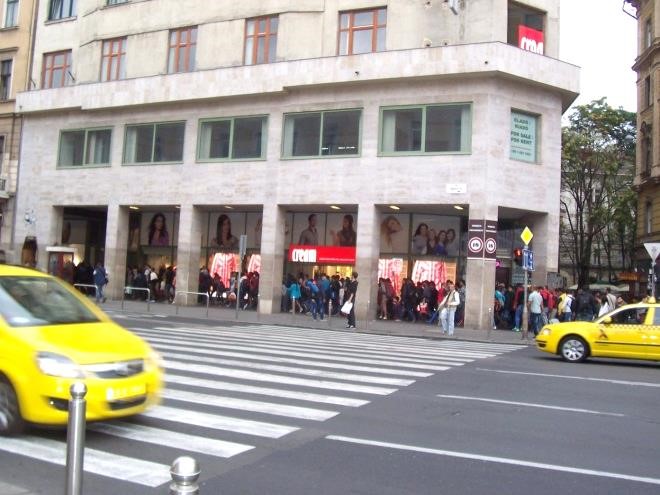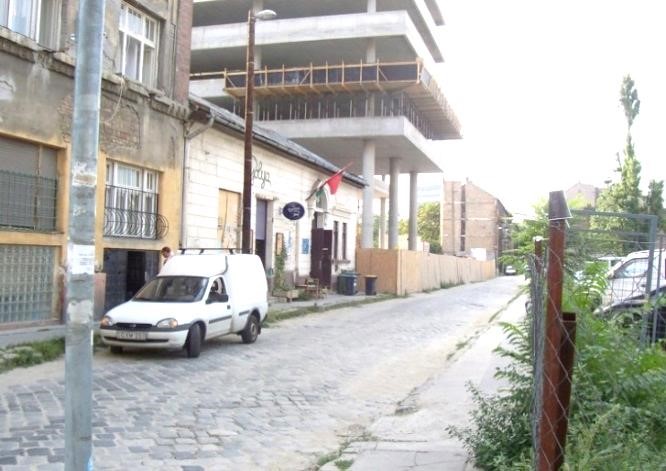By Johanna Bockman
At the beginning of September, I traveled to Budapest, Hungary to give a talk in a conference organized by a working group of young social scientists called “Helyzet Műhely” (their name in English is “Situation” Working Group for Public Sociology). Through this trip to Budapest, not only did I come into contact with sociologists and other social scientists, I also came into contact with events of great sociological interest. Traveling sociologically brought me face to face with the Syrian refugees moving through Budapest and face to face with global gentrification.
I am not the best traveler. I often find myself bored by extremely nice vacations. For example, a vacation brought me to a tropical locale, but soon I was bored with the endless exotic animals and with the resort world.
After days of monkeys, dolphins, and so on, the tour guide in passing mentioned that he and his father had recently marched in a communist parade. Soon after this, outside looking at the star-filled sky, a restaurateur told me the details of the region’s new Free Trade Agreement, focusing on the dairy quotas.
Now, this is the kind of travel I like – traveling sociologically! Maybe some of you also like such travels. A disturbing corollary of traveling sociologically is disaster tourism, such as tours of the 9th ward in New Orleans.
While I fully accept the criticisms of such tours, I also think that traveling sociologically is much broader, including such strange activities as visiting factories, joining protests, and going to local community meetings. All these activities provide a view of events or phenomenon that cannot be gained from newspaper articles or from internet sources.
These activities also potentially tie us to others around the world in connections of solidarity. At the same time, we should recognize that we have helped to create the problems – refugee crises or global gentrification – that we observe as sociologists.
Travelling sociologically might just be part of living sociologically. I found myself in Budapest during the refugee situation – the people fleeing Syria and other war-torn or economically impoverished countries are trying to make their way through Macedonia, Greece, Serbia, and Hungary to get to Austria, Germany, and other countries perceived as having more resources and being more welcoming than Eastern Europe. The Hungarian government refused to help the refugees and suggested that they might put the refugees in severe danger.
My first observation as I drove through a large swath of the city and then walked around the city was that the city was not overrun by refugees, as the media suggests. In fact, residents and tourists seemed to be going about their usual activities on a beautiful late summer day and evening.
The restaurants were packed; the streets were filled with cars and bright lights; and there were various festivals. A couple of people from the “Situation” working group took me over to the Keleti train station. We first bought many large bottles of water at the grocery store to bring to the Migration Aid station, the group of volunteers helping the refugees. There were refugees in a park about a block from the train station, reclining in small groups on the grass. We walked through the park and then went to the area in front of the station and delivered the water, then we walked out a different way.
Here is how I described what I saw:
I walked with some colleagues through the Keleti train station today. It seemed overwhelming that all these people have to live such public lives in such small spaces.
I saw children drawing pictures with crayons, a man painting a picture of a flag, a woman nursing her baby, kids fixing each other’s hair, many people talking endlessly in groups sitting in their small spaces.
They appear to have endless sources of patience, unimaginable patience to sit and wait in such a precarious situation and in hot/muggy weather, though in the very short time I was there I saw a child cry out of what seemed like utter frustration and a young man being comforted by what looked like friends or family.
The Hungarian government is discussing very inhumane laws in the name of being overrun, while the city continues on with life as if nothing was happening in this little section of town, the normal life of these beautiful late summer days. Taking photographs was strongly discouraged by my colleagues. There were many professional-looking photographers in the train station area, creating the photographs that we see in the media, but also invading the minimal privacy the refugees have. Yet, seeing the train station in the broader context of Budapest brought me new understanding of the situation. After having lunch with some colleagues the following day, I was walking back to my hotel and was surprised to see a group of refugees.
They were walking briskly and keeping close together. They said Join Us! I went back outside and was about to join them after I took this picture:
While taking this picture, I was approached by a very angry pensioner and her grandson. She wanted to know where I was from and why I was in Budapest. We ended up talking for about an hour.
Her fear made her see refugees everywhere, shutting down the city. But I said that I had been all around the city and they weren’t. She was so filled with anger and fear, but at times her fear would dissolve and she seemed surprised. I saw this similar fear appear when my father would recount things he heard on talk radio and Fox News.
I asked my colleagues: “What can we do to help the refugees?” Providing donations to refugee non-profits is one set of answers. Yet, there is another set of answers, such as that provided by one of the “Situation” working group members:
“I would also add that posts blaming Hungary and Hungarians do not help relieve the structural tension accumulated here. Yes we have angry poor Hungarians, and even poorer migrants. We have both. Not to set them against each other is one sort of help international commentators can give.”
How can we see the situation of the poor in Hungary and transnationally? How are elites pitting the poor against each other? How is the European Union benefiting from the actions of the Hungarian government?
The conference took place at the Gólya (Stork) Community Center and co-operative bar in the inner city area of Budapest.
The conference explored how knowledge – such as economic knowledge or highly technical knowledge – is produced in the specific location of Eastern Europe as the semi-periphery in the capitalist world system. Is Eastern Europe only receiving knowledge developed in the core capitalist countries, which has subordinated Eastern Europe? Or is there scientific and technical
knowledge produced in this semi-periphery that might not encourage the subordination? Might places at the margins or at the periphery provide knowledge unattainable at the center?
Gólya Community Center sits at the margins, at the border of global gentrification. Gentrification is the replacement of lower-income residents and businesses with higher-income residents and businesses. Global gentrification is this process happening around the world with global financial resources.
In the photo below, Gólya sits in a one-story building that has been a restaurant for about one hundred years. Next door, the new headquarters of Nokia is being constructed.
Across a parking lot with high-end cars is a large, new shopping mall surrounded by luxury condos and high-end restaurants, including bars, grills, gated restaurant with doormen with whisper mikes and playgrounds inside.
Gólya provides a location for those in the community to learn about urban sociology and urban geography developed around the world and to discuss what to do about this global gentrification in front of them. They also create new knowledge about how global gentrification works in their part of the world and how communities have confronted it.


